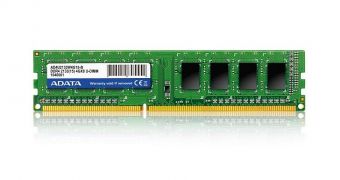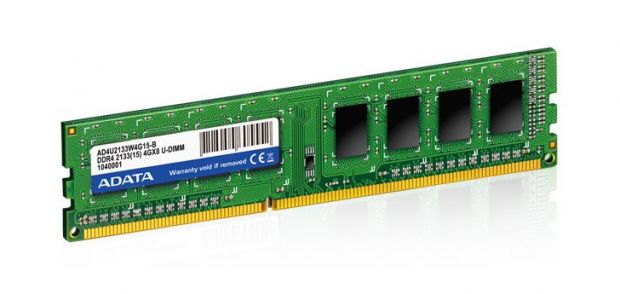The DDR4 technology will be the next great leap in memory technology, bringing with it both higher capacities and much better clocks compared to DDR3. It so happens that ADATA is ready to sell modules based on the specification already.
This isn't exactly news. ADATA has been preparing DDR4 memory for specific markets for months and even revealed a gaming-grade, airplane-shaped DDR4 line at Computex 2014.br /> However, it turns out that not everyone has to wait until then. If you intend to build a strong workstation based on Intel's Haswell-E extreme-performance CPU line, you can get DDR4 right now.
Granted, Intel hasn't released the Core i7-5960X CPU or any others in that particular collection. That doesn't mean you can't get the CPU anyway though.
Besides, one of the Haswell-E Core i7-5960X CPUs landed in the hands of certain people not long ago, and got its IHS removed, to see how Intel went about cooling this time.
The find was that the processors don't use TIM, even a high-quality one. Instead, the chip die is soldered to the IHS itself, boosting cooling performance even higher than usual.
The bottom line is that the Haswell-E Intel CPU line is overpowered and only DDR4 memory can really keep up with it, let it stretch its wings as it were.
The new RAM from ADATA comes in the U-DIMM format, Unbuffered DIMM, and has a frequency of 2,133 MHz.
That's just the standard setting though. It should be overclockable, not that it will really be necessary. After all, the comparison is between this setting and the normal performance of DDR3, which is of 1,066 to 1,600, with 1,333 MHz as a sort of stepping stone.
Sure, there are plenty of DDR3 modules that go higher, some even reaching 2,500 MHz or more, but that's only because of factory overclocking. DDR4 will receive the same treatment within months of release, no doubt. RAM makers will need some way to compete against each other after all.
Anyway, the 2,133 MHz ADATA DDR4 RAM will save 20% on energy (works on 1.2V instead of 1.35 V or 1.5V) and ship with lifetime warranty. That's product lifetime, meaning until the product gets replaced by a successor. It's a very vague term really. Sadly, ADATA did not include a price in its press release, not that we really expected one.

 14 DAY TRIAL //
14 DAY TRIAL // 

